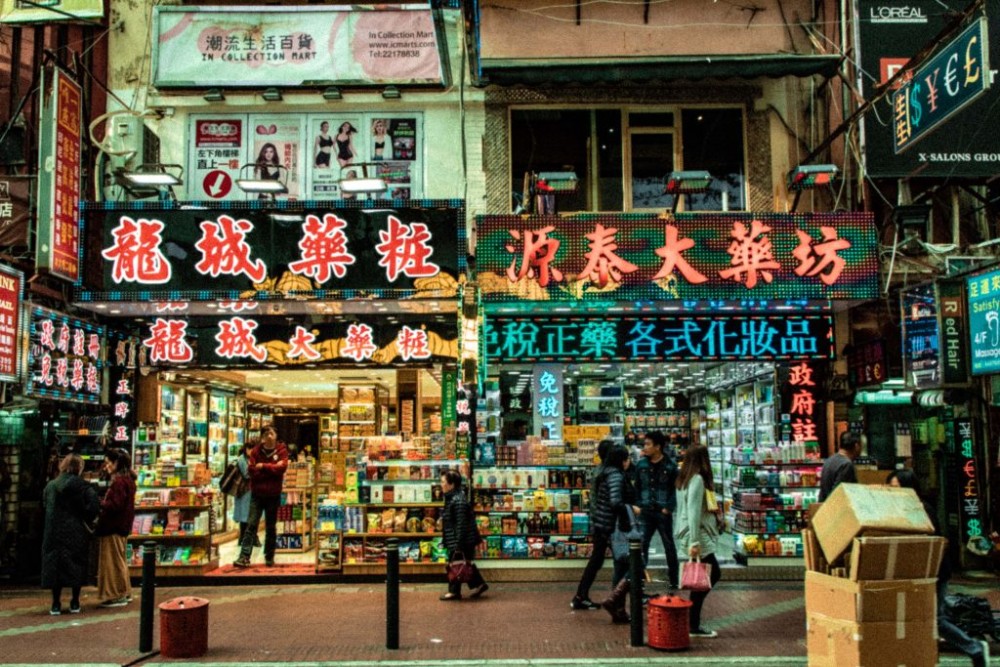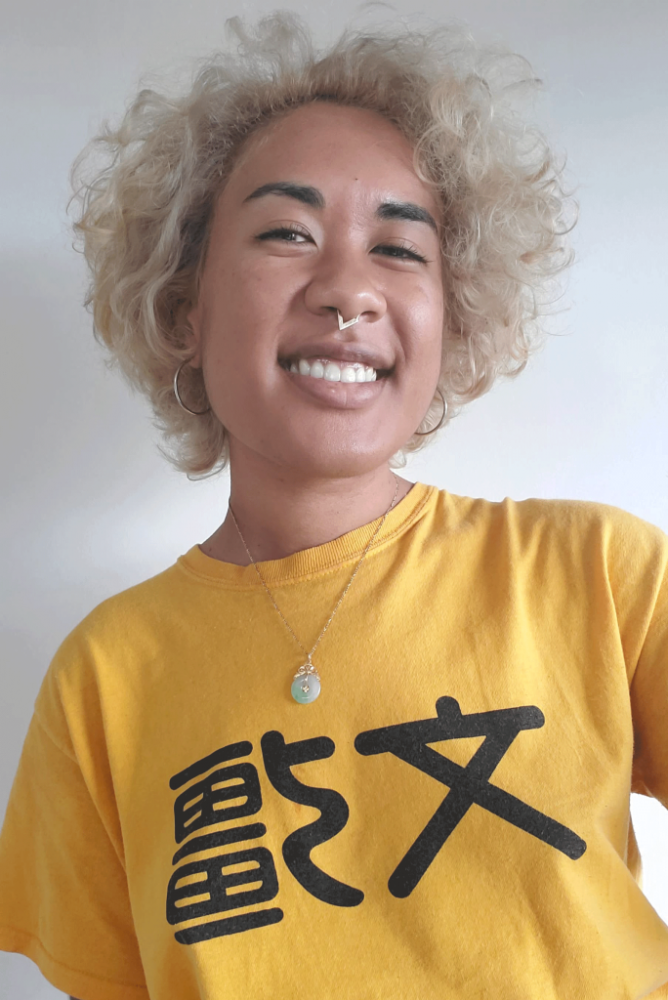Cantonese: How professors, students and activists are preserving the language
Aug 02, 2021
Despite reports to the contrary, Cantonese is alive and well and even gaining in popularity. Elizabeth Choi talks a range of professors, students and activists working to preserve the language for future generations.

In December 2020, Stanford University’s Cantonese language programme, one of the oldest of its kind in North America, became the subject of online discourse when it was announced that the school would not be renewing the contract of programme coordinator Dr Sik Lee Dennig in an effort to offset budget shortfalls due to COVID-19.
“Stanford’s Cantonese language programme has been changing students’ lives since 1997,” read a statement from students, alumni and faculty. “The decision effectively ends the programme that [Dr Dennig] has carefully developed and nurtured for over two decades… This threatens the long-term viability of the Cantonese programme.”
While Dennig was not the only Stanford instructor impacted by the budget cuts, observers became dismayed at how the university handled this cut in particular – especially in light of the school’s historic ties to the Cantonese language.
“Chinese railroad workers, most of whom spoke a Cantonese (Yue) language, were integral to the construction of the transcontinental railroad,” reads a petition organised by Stanford students and alumni. “Tens of thousands of them came from southern districts of Guangdong province as part of a massive migration to meet labour demand in California and the American West… These Cantonese workers suffered gruelling and dangerous working conditions, paltry wages and violent prejudice to construct the railroad that made Leland Stanford exorbitantly rich – rich enough to buy the summer home and farm in Palo Alto that we now know as Stanford University.”
In a letter to President Andrew Jackson in 1865, Stanford himself wrote that it would have been “impossible to complete the western portion of this great national enterprise” without Chinese workers. “Stanford University has a responsibility to address the harms its founder caused to Chinese Americans, and specifically those whose heritage reflect the Cantonese diaspora. Removal of the Cantonese programme erases the historical contributions of the Cantonese language, culture and communities to the founding of this university,” the petition reads.

By January 2021, the petition had gathered more than 3,600 signatures. Utilising the hashtag #savecantonese, it evolved into a larger movement with global scope and far-reaching implications including generating a number of interesting conversations around language access, cultural preservation and personal connection to Hong Kong culture.
As anyone who has ever attempted to learn Cantonese will tell you, there’s a nagging notion that the Cantonese language is dying: Canto aspirants are often told by family members, colleagues and friends that Mandarin is “easier” and “more beneficial”. And these days, everyone from professional athletes to Hollywood actors are learning to speak it.
Despite these signals, interest in Canto hasn’t subsided. In fact, lately, it’s been on the rise. Lecturer and PhD student Raymond Pai established the Cantonese Language Programme at the University of British Columbia in 2015 with just 50 students. Today it has nearly 500.
“I’ve been following the global university course offerings in the Cantonese language, particularly in North America,” Pai says, adding his support for #savecantonese. “For the past decade or so, the number of post-secondary institutions offering Cantonese in Canada and the United States has been quite stable at around 25, despite a decrease in both school resources and student enrolment. However, there seems to be a resurgence of awareness and interest in learning the language among the Cantonese diasporas around the world, thanks to new Internet resources like Cantonese YouTubers and digital materials.”
Outside of Hong Kong and Southern China, Pai also cites social movements in Hong Kong as having piqued interest in heritage, identity and localism, with “the idea of solidarity among Asian Americans and Canadians” as motivators to picking up the language. Indeed, greater accessibility to Cantonese language materials has also lowered the barriers to learning it.
On June 2, Pearl Low, a Chinese-Jamaican story artist, comics artist and illustrator based in Vancouver tweeted a thread of resources she uses for her personal Cantonese self-study. It received considerable engagement thanks to its bevy of podcasts, language apps, online dictionaries, Reddit forums and YouTube channels – everything from Cantonese ASMR to yoga. Even ViuTV’s Mirror versus Error game show made it to the roster because Low, being outside Hong Kong, enjoys seeing people her age speaking Cantonese.

“Cantonese is my heritage language and ever since I was young, I’ve always wanted to speak the language. My po4 po4 and gong1 gong1 don’t speak English and I’ve been especially motivated to learn to better communicate with them as well as to better connect to my heritage,” she explains.
Low, who is 26, says she has been trying to learn the language all her life. “I think there’s so much richness you can get from learning your heritage language and that there’s so much more you can learn about your own culture,” she says.
“I’ve also been really vocal about the preservation of Cantonese and trying to shift a common narrative that many immigrant parents who come to North America often have: ‘Cantonese is not useful, so there’s no point in learning it’. Many of our parents had to assimilate into a racist society and they were often made to feel that their language wasn’t Canadian enough, or was something embarrassing.”
Low observes how the pressure to assimilate and the racism faced by the previous generation have led to a lack of Cantonese fluency in her generation. It’s a sentiment echoed by Professor Pai. “As we now embrace diversity in societies, it’s more important than ever to preserve and promote this language which has historic significance both at personal and social levels,” he says. “While anti-racism is being discussed on the news these days, the right to access and learn a non-dominant language to break down cultural stereotypes and eradicate ill-informed biases cannot be emphasised enough.”
While many learn Cantonese to connect with their culture and family history, there remains a profound real-world, innate usefulness of the language in the day-to-day lives of immigrant Chinese. Kasie Lee sees this regularly in her work as prosecutor in San Francisco. A second-generation American-born Hongkonger, Lee wants to raise Cantonese language awareness for the benefit of Cantonese-speaking individuals in the San Francisco Bay Area and across the nation.
“We have an ongoing issue in San Francisco and likely the entire country that has persisted for decades,” Lee explains. “Title VI of the United States Civil Rights Act of 1964 provides that those agencies receiving federal funds must comply with language access laws – which essentially mandates that services are linguistically appropriate.”
She cites two recent cases in San Francisco, one involving an armed carjacking and another a violent crime, in which Cantonese-speaking victims were adversely impacted as they did not have access to law enforcement resources or individuals with whom they could adequately communicate. “These are common occurrences,” she says.
In San Francisco, where Cantonese is the most common Chinese language, Lee is pushing her office, the San Francisco District Attorney’s Office, to hire more Cantonese-speaking staff and is working to enforce strict language-access laws passed by the city to ensure that Cantonese-speaking crime victims can be served in their preferred language.
In addition to her professional efforts, Lee started the website Lowdown on Chinatown to document and draw attention to the gentrification of Chinatowns “and to humanise our towns, while highlighting the role of Cantonese,” she says. It’s an important trend to be aware of as the community faces an alarming rise in anti-Asian violence.
For Lee, knowing Cantonese opened doors both professionally and personally. “I served as a legal aid attorney and later opened my private practice representing low-income Cantonese-speaking clients. But beyond that, it was a key to another world – my life was made richer because I could access Hong Kong entertainment, music, news – as well as my family’s history. The language itself is unique and colourful. I would like our future generations to have the same option of having this experience.”
See also: Stop Asian Hate: How Susie Bubble and Bryanboy are speaking out
In Hong Kong, the desire to understand and embrace this unique and colourful language and culture is not lost on residents – even the ones who are stereotyped as being uninterested in learning anything beyond “mm goi”. Kate Reilly, who describes herself as an immigrant Hong Kong filmmaker originally from the US, lives in Tsuen Wan with her husband, Leung Ming-kai, a Hong Kong cinematographer and director.
“I think it’s a matter of respect to try to learn the primary language of whatever place you live in, especially if you wield a lot of power and privilege,” Reilly says. “If you’re a white English speaker like me and your opinions on Hong Kong have global reach and can help shape policy – [Hong Kong is] a global financial centre with a lot of influential transplanted white-collar workers – then we should truly know the place and people we’re talking about.”
For Reilly, this means learning Cantonese. “In my experience, Hong Kong people are accustomed to white foreigners like me never making an effort to learn Cantonese… How else can we fully experience our home? How else can we get to know locals who may not speak our native language? How else can we learn what our neighbors feel about the news of the day?”
She believes it’s important to learn Cantonese so that she can be self-reliant in daily life and in making authentically local films. “For the places I like to go, the people I like to talk with and the stories I like to tell, English does not suffice,” she says. Reilly and Leung recently made their first Hong Kong film together, Memories to Choke On, Drinks to Wash Them Down, a series of four vignettes about daily life, nostalgia and reality in Hong Kong.
“I don’t think of myself as an expat,” Reilly says. “I’m an immigrant, I live here and I hope to spend the rest of my life in Hong Kong.” While she finds learning the language challenging, she still wants to try her best, and has even noticed “people around the world are excited to learn Cantonese right now.”
“I’ve talked with many recent and prospective Cantonese students in Hong Kong who want to learn more, and I’ve seen diasporic Hongkongers posting online about how they’ve been working on their Cantonese,” she says. “Those posts generate a huge response and other people jump in to suggest the resources they’ve been using to learn Cantonese.” She also looks forward to using her Cantonese with Hongkongers overseas in places like London or Melbourne.
Staying connected to Hong Kong from overseas, Lee worries that the urgency to learn and preserve Cantonese becomes invisible in Hong Kong because the language is so pervasive here. “All it takes is one generation for the language to lose its significance and then gradually disappear,” she says, citing instances of language loss in Singapore and Toisan.
Pai sees this as yet another reason to pick up a new language. “Learning a language opens doors to a world of rich culture, history and knowledge. We have many students who are learning the language in order to communicate with family members and people in their communities and neighborhoods,” he says.
“The drive and motivation to learn for these reasons show us the potential to use language to bridge differences and gaps, as well as resolving misunderstanding and fighting racism. Even though it’s a minority language in many parts of the world, Cantonese is indeed a language with great historical and sociocultural impact and value.”
See also: 6 Asian models that champion LGBTQ+ representation


























